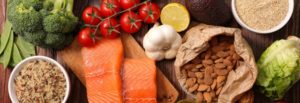
Navigating the noise around processed and ultra-processed food makes eating a healthy meal feel almost too stressful to bother.
But nearly 58% of calories eaten in the US and 56% of the calories consumed in the UK come from Ultra-processed foods, making them the primary energy source of those countries. The worse news is that higher consumption of ultra-processed food is associated with a 79% and 30% substantial risk of obesity and abdominal obesity, increasing the risk factor for cardiovascular disease, high blood pressure, sleep apnoea, Type 2 diabetes, musculoskeletal conditions and cancer.
Knowing what foods get grouped as ultra-processed can help us prioritize our focus for better nutrition and overall health.
The Centre for Epidemiological Studies in Health and Nutrition, School of Public Health, University of Sao Paulo, Brazil, designed the NOVA Food Classification system, which helps people group foods according to the processing they experience.
The four groups are:
1.Unprocessed and minimally processed,
2.Processed culinary ingredients,
3.Processed,
4.Ultra-processed,
Group One: Unprocessed & Minimally Processed

Unprocessed or minimally processed foods are whole-foods with intact vitamins and nutrients, often in natural or nearly natural conditions.
Unprocessed or natural foods are taken directly from plants or animals and do not get altered following their removal from nature.
Minimally processed foods get modified by removing inedible parts, drying, fermentation, crushing, roasting, boiling, freezing, or pasteurizing to make them appropriate to store and safe to ingest. That process does not add oils, fats, sugar, salt, or other substances to the original food.
Minimally/unprocessed food examples
- Fruit
- Vegetables
- Nuts
- Seeds
- Rice
- Grains of wheat, oats, and other cereals
- Dried or fresh pasta
- Lentils, chickpeas, beans, and other dried legumes
- Eggs
- Fish
- Milk
- Meat
- 100 percent fruit juice
- Tea (all types)
- Coffee
- Spices
- Dried herbs
- Tap, spring, and mineral water
Group Two: Processed Culinary Ingredients

Processed culinary ingredients are products extracted from natural foods or nature by pressing, grinding, crushing, pulverizing, and refining.
As long as they get used in moderation in culinary preparations based on natural or minimally processed foods, they can contribute to eclectic and delicious diets without rendering them nutritionally unbalanced. But some can be highly processed, such as rancid vegetable oil, or derived from low-quality sources, damaging our health. Try and choose high-quality culinary ingredients.
Processed culinary ingredient examples
- Oils
- Fats such as butter
- Vinegar
- Sugars
- Salt
- Honey extracted from honeycombs
- Coconut fat
Group Three: Processed
Processed foods change from their natural state by adding salt, oil, sugar, or other enhancer substances. Processed foods often have two or three ingredients.
It can be easy to forget that freshly made, crusty artisan sourdough and canned chickpeas are still processed, containing multiple ingredients, but that doesn’t necessarily make them “bad.”
Processed food examples
- Canned fruit in syrup
- Canned fish, like sardine and tuna, with or without added preservatives
- Canned or bottled legumes or vegetables preserved in salt (brine) or vinegar, or by pickling
- Freshly-made (unpackaged) bread,
- Beer, cider, and wine
- Cured meat
- Bacon
- Fresh cheese
Group Four: Ultra-Processed

Ultra-processed foods include substances extracted from other foods, such as fats, starches, added sugars, and hydrogenated fats. They may also contain synthetic additives like artificial colours and flavours or stabilizers. These foods include soft drinks, frozen meals, processed meat, fast food, packaged cookies, cakes, and salty snacks. Studies show that nutrient availability in the small intestine is affected when food is ultra-processed because the food’s plant properties and animal cells get altered. Destructive health issues arise when ultra-processed foods replace unprocessed and minimally processed foods that contain vital nutrients for your health. It can be easy to spot ultra-processed foods because they usually contain numerous ingredients you’d never use in your kitchen. But repeatedly, ultra-processed foods get disguised in everyday foods we take for granted.
Ultra-processed food examples
- Fatty, sweet, savoury, or salty packaged snacks
- Biscuits (cookies)
- Ice creams and frozen desserts
- Chocolates, candies, & confectionery in general
- Cola, soda, and other carbonated soft drinks
- ‘Energy’ and sports drinks
- Canned or packaged or dehydrated (powdered), & other ‘instant’ soups, noodles, sauces, desserts, drink mixes, and seasonings
- Sweetened & flavored yogurts, including fruit yogurts
- Dairy drinks, including chocolate milk
- Sweetened juices
- Margarine & spreads
- Pre-prepared (packaged) meat, fish,& vegetables
- Pre-prepared pizza and pasta dishes
- Pre-prepared burgers, hot dogs, sausages
- Pre-prepared poultry & fish ‘nuggets’ & ‘sticks’
- Other animal products made from remnants
- Packaged bread, hamburgers, & hot dog buns,
- Baked products containing ingredients such as hydrogenated vegetable fat, sugar, yeast, whey, emulsifiers, and other additives
- Breakfast cereals and bars
- Infant formulas and adult meal replacement shake (e.g., ‘slim fast.’)
- Pastries, cakes, and cake mixes
- Distilled alcoholic beverages like whisky, gin, rum, and vodka






